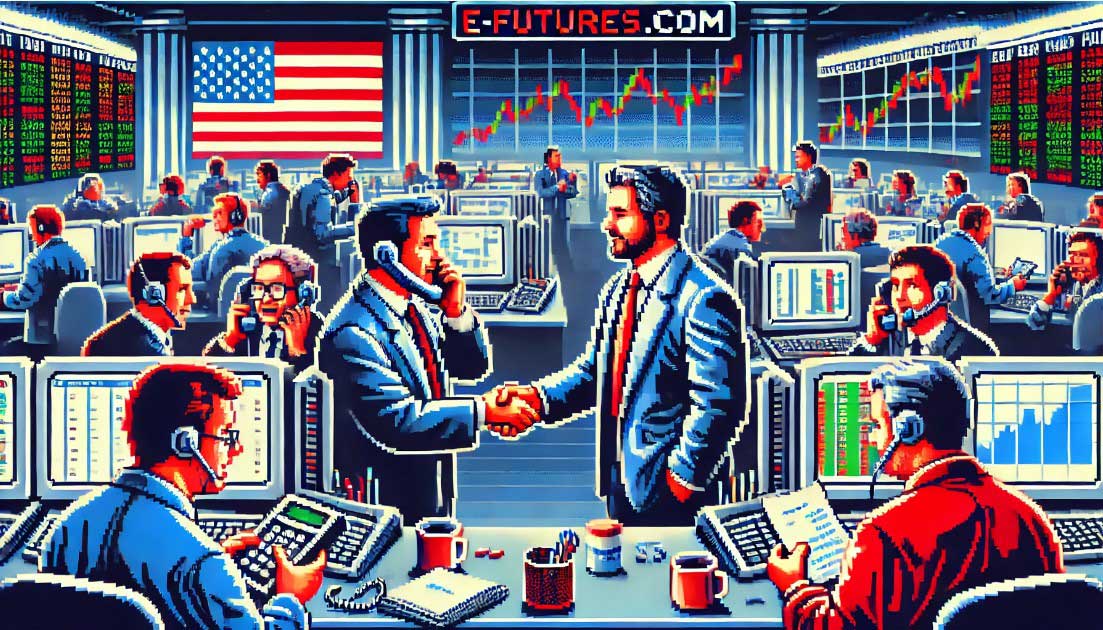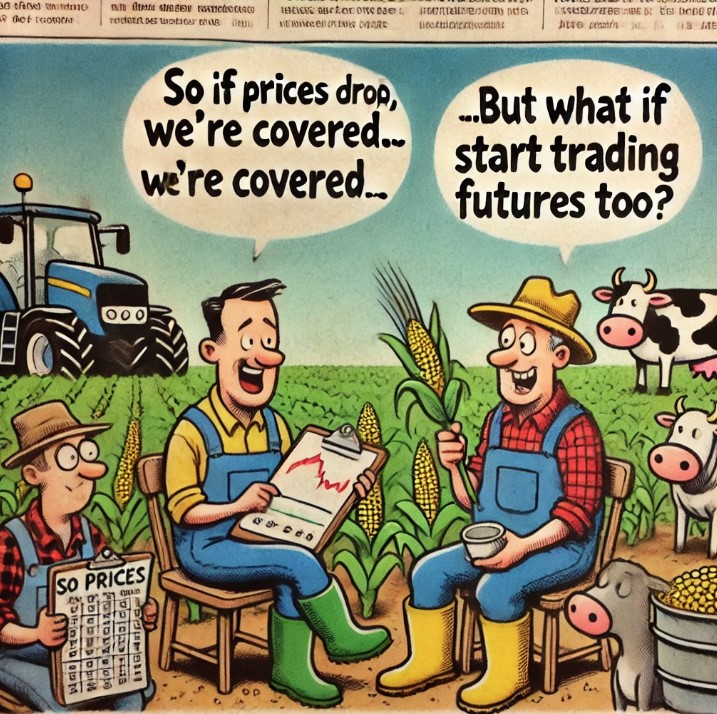Commodities speculation, and by extension futures trading, has evolved into a sophisticated global industry, integral to the functioning of modern financial markets. This transformation has been driven by a combination of technological innovation, economic development, and regulatory advancements. Commodities brokers and future brokers play a pivotal role in this ecosystem, enabling individuals, corporations, and institutions to hedge risks, speculate on price movements, and secure commodities at future dates. To understand their significance, one must delve into the historical context of commodities speculation, the role these brokers play in today’s market, and the risks associated with trading without them. Additionally, platforms like E-Futures.com exemplify why seasoned brokers with cutting-edge platforms are crucial in the fast-paced world of futures trading.
Historical Development of Commodities Speculation
Commodities trading has ancient origins. The first recorded instances of commodity trading trace back to ancient civilizations, where agricultural and metal products were exchanged for goods or services. However, the concept of formalized speculation, where traders bet on future price movements of these commodities, began to take shape in the 19th century.
In the United States, the roots of commodities speculation lie in the agricultural sector, where farmers sought to protect themselves from price fluctuations in crops like wheat and corn. By selling their crops at a predetermined price for future delivery, farmers could hedge against the risk of a bad harvest or unfavorable market conditions. This mechanism, known as a forward contract, eventually evolved into futures contracts, with standardized terms traded on formal exchanges.
The Chicago Board of Trade (CBOT), established in 1848, played a crucial role in shaping the modern futures market. It created a marketplace where farmers and traders could buy and sell contracts for the future delivery of agricultural products. Over time, futures contracts expanded beyond agriculture to include energy, metals, and financial products, reflecting the changing dynamics of global trade and commerce.
By the 20th century, commodities speculation had become a global industry, attracting speculators and investors who sought to profit from price volatility. The creation of the Commodity Futures Trading Commission (CFTC) in 1974 helped regulate the market, fostering greater transparency and security for market participants. With technological advancements, particularly the advent of futures online trading platforms, commodities speculation has grown into an accessible and highly liquid market that continues to play a critical role in global finance.
The Role of Commodities and Future Brokers
Commodities and future brokers serve as intermediaries between traders and exchanges, facilitating the buying and selling of futures contracts. Their primary responsibility is to execute orders on behalf of their clients, whether they are individuals, corporations, or institutional investors. Beyond executing trades, brokers provide a range of services that add value to the trading process:
- Market Insights and Analysis: Brokers often offer expert analysis and research, helping clients make informed decisions based on market trends, supply-demand dynamics, geopolitical factors, and economic indicators. For example, seasoned brokers at platforms like E-Futures.com provide clients with data-driven insights into market movements, helping them navigate the complexities of commodities trading.
- Risk Management: One of the key benefits of using a commodities broker is their expertise in risk management. Futures trading inherently carries significant risks due to price volatility, leverage, and market fluctuations. Brokers help clients hedge their positions by advising on strategies such as spreading (holding multiple positions to offset risk) or using options in conjunction with futures contracts to minimize potential losses.
- Access to Futures Online Trading Platforms: In the modern era, brokers provide access to online trading platforms that offer real-time market data, advanced charting tools, and customizable interfaces. For instance, E-Futures International, the free futures online trading platform offered by E-Futures.com, is designed to give traders full control over their positions while providing the necessary tools to make quick, informed decisions.
- Compliance and Regulation: Brokers ensure that their clients comply with regulatory requirements, particularly in heavily regulated markets like the United States. The CFTC and the National Futures Association (NFA) set strict standards for futures trading, and brokers play a crucial role in ensuring adherence to these rules.
Why Brokers Are Essential in Modern Futures Trading
In today’s highly competitive and volatile markets, commodities brokers and futures brokers are indispensable for several reasons:
- Expert Guidance: The commodities market can be unpredictable, influenced by a range of factors from weather conditions to global political events. Brokers help clients interpret these signals and make decisions that align with their investment goals. The experience of seasoned brokers, like those at E-Futures.com who have decades of experience, is invaluable in navigating these complexities.
- Leverage and Margin Management: Futures contracts often involve significant leverage, meaning that traders can control large amounts of commodities with relatively small amounts of capital. However, this also increases the risk of losses. Brokers assist in managing margin accounts, ensuring that clients meet margin requirements and avoid costly margin calls.
- Liquidity and Market Access: Brokers provide access to deep liquidity pools and a wide range of markets. Whether a client wants to trade crude oil, precious metals, or financial futures, brokers offer the infrastructure to facilitate these trades efficiently. Without brokers, retail traders would find it difficult to access the same level of liquidity and execution speed.
- 24/7 Trading Support: The global nature of commodities markets means that trading can occur around the clock. Brokers provide the necessary support for clients who need to execute trades at any time, ensuring that they can react quickly to market changes. E-Futures.com, for example, offers 24-hour trading support to accommodate clients in different time zones or those who want to trade in after-hours markets.
Disadvantages of Not Using a Commodities or Futures Broker
Attempting to trade commodities or futures without the assistance of a broker presents several challenges and disadvantages:
- Lack of Expertise: Without a broker’s guidance, traders may struggle to understand the intricacies of the futures market. This can lead to poor decision-making, especially in high-volatility markets. Professional brokers bring years of experience and knowledge to the table, helping traders avoid common pitfalls.
- Increased Risk Exposure: Trading futures without proper risk management strategies can lead to significant losses. Brokers help clients develop and implement risk management plans, which are critical for navigating the leveraged nature of futures contracts. Without this expertise, traders may take on more risk than they can handle.
- Technical and Regulatory Challenges: Navigating the technical aspects of trading platforms, such as order types, margin requirements, and settlement procedures, can be daunting for inexperienced traders. Furthermore, compliance with regulatory standards is critical in futures trading, and brokers ensure that clients remain compliant with the rules of exchanges and regulatory bodies.
E-Futures.com: A Leading Platform for Futures Trading
E-Futures.com stands out as an exceptional place to trade futures, offering a comprehensive and user-friendly experience. Several factors contribute to its reputation as one of the best futures online trading platforms:
- Free Trading Platform: E-Futures International, the free futures online trading platform offered by E-Futures.com, is a standout feature. The platform provides a wide range of tools for traders, including real-time quotes, advanced charting, and customizable interfaces. It caters to both novice and experienced traders, allowing them to tailor the platform to their specific needs.
- Dozens of 5-Star Reviews: E-Futures.com has garnered dozens of 5-star reviews on TrustPilot, reflecting its commitment to customer service and satisfaction. Client testimonials frequently praise the platform’s ease of use, the helpfulness of its brokers, and the reliability of its execution services.
- Experienced Brokers: One of the key strengths of E-Futures.com is its team of highly experienced commodities and future brokers. With decades of experience, these brokers provide clients with personalized advice and market insights, helping them navigate the complexities of futures trading. Their expertise is particularly valuable for traders who need assistance with risk management, strategy development, and market analysis.
- Wide Range of Markets: E-Futures.com provides access to a broad array of futures markets, including agricultural commodities, energy products, metals, and financial instruments. This diversity allows traders to diversify their portfolios and capitalize on opportunities across different sectors.
- Exceptional Customer Support: The platform offers 24-hour support, ensuring that traders can access assistance whenever they need it. Whether it’s technical support or market analysis, the team at E-Futures.com is available to help clients make informed decisions in real-time.
Commodities brokers and future brokers are essential players in the modern trading landscape, providing expertise, market access, and risk management to traders of all sizes. Their historical role in shaping commodities speculation has evolved into a vital function in today’s financial markets. Trading platforms like E-Futures.com exemplify how the combination of technology, seasoned brokers, and comprehensive support can empower traders to succeed in the fast-paced world of futures trading. The importance of brokers cannot be overstated, as they offer the guidance and tools necessary to navigate the inherent complexities and risks of futures markets.
To open an account with E-Futures.com, please click here.
Top of FormReady to start trading futures? Call US 1(800)454-9572 – Int’l (310)859-9572email info@cannontrading.com and speak to one of our experienced, Series-3 licensed futures brokers and start your futures trading journey with E-Futures.com today.
Disclaimer – Trading Futures, Options on Futures, and retail off-exchange foreign currency transactions involves substantial risk of loss and is not suitable for all investors. Past performance is not indicative of future results. You should carefully consider whether trading is suitable for you in light of your circumstances, knowledge, and financial resources. You may lose all or more of your initial investment. Opinions, market data, and recommendations are subject to change at any time.
Important: Trading commodity futures and options involves a substantial risk of loss. The recommendations contained in this writing are of opinion only and do not guarantee any profits. This writing is for educational purposes. Past performances are not necessarily indicative of future results.
**This article has been generated with the help of AI Technology. It has been modified from the original draft for accuracy and compliance.
***@cannontrading on all socials.








